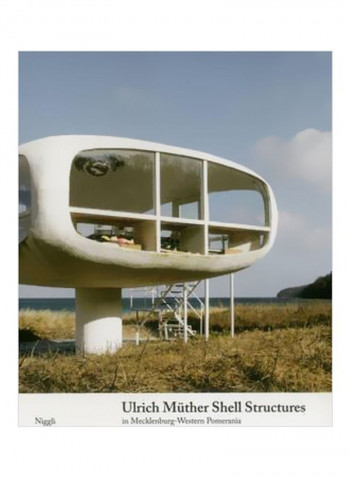Ulrich Muther Shell Structures: In Mecklenburg-Western Pomerania Paperback
Recommend
Sort by
Rating
Date
Specifications
Author 1
Rahel Lämmler
Book Description
Any fan of mid-century cool will crave this impressive book on the works of East German engineer Ulrich Muther, a pioneer in concrete shell construction from the early 1960s. A beautifully photographed small-format book, this winner of the 2009 Architecture Book Prize from the Deutsches Architektur Museum brings together (for the first time) these fresh and technically impressive buildings. From the Space Age beach house on the cover to a myriad of modernism all around Germany, Muther's remarkable vision opens a whole new world to today's architecture buff. Includes plans, project information, survey maps and addresses to facilitate on-site visits (the book is just the right size for a glove compartment). With articles by Michael Wagner and Rahel Lammler, Prof. Arch. Georg Giebeler, Prof. Dr. Massimo Laffranchi.
ISBN-13
9783721207477
Language
English
Publisher
Niggli Verlag
Publication Date
2/15/2011
Number of Pages
120
About the Author
Ulrich Muther was born on July 21st, 1934 in Binz on the island of Rugen. At 17 Muther began his training as an engineer at the engineering school in Neustrelitz where he acquired his first knowledge of statics and engineering. During his studies in Dresden Muther directed his attention to shell constructions made of concrete. In 1963 he realised the idea in his final paper in the form of a roof for the multi-purpose hall of the vacation home, Haus der Stahlwerker (House of the Steelworkers) in Binz. It is considered the first hypar shell structure made of reinforced concrete in the GDR. With the construction of the hall for the Baltic Sea Fair in Rostock Schutow in 1966, Muther layed the foundation stone for his continued success and began to attract the attention of professional circles within the GDR. In the sixties and seventies Muther's shell constructions provided the ideal architectural touch for the new socialist Germany as a foil to West Germany. The minimal deployment of materials that were scarce to begin with fit in perfectly in the context of the generally promoted rationalisation in construction.
Author 2
Michael Wagner
Author 3
Ulrich Muther



